夯枷解厄
Lock for Luck
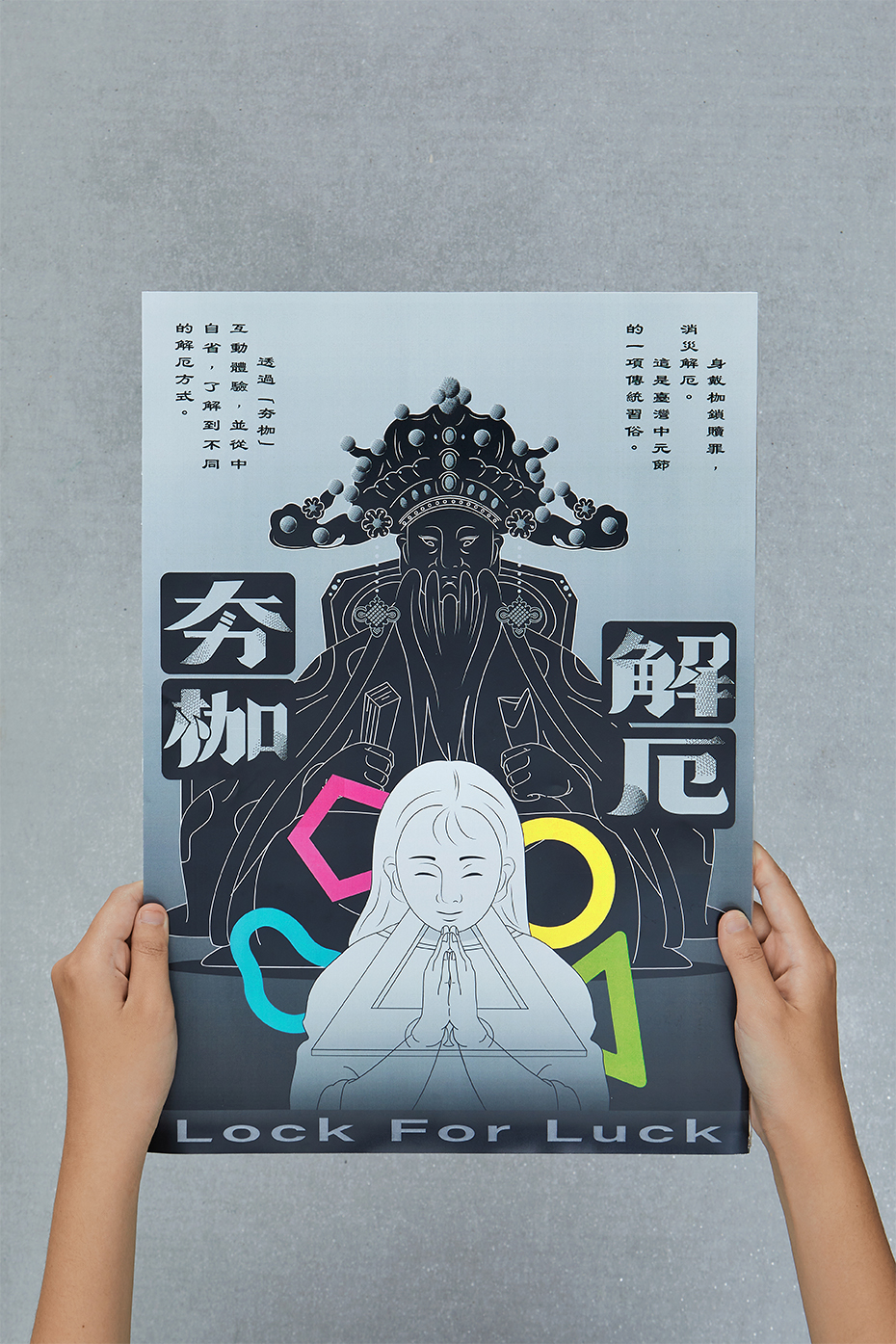
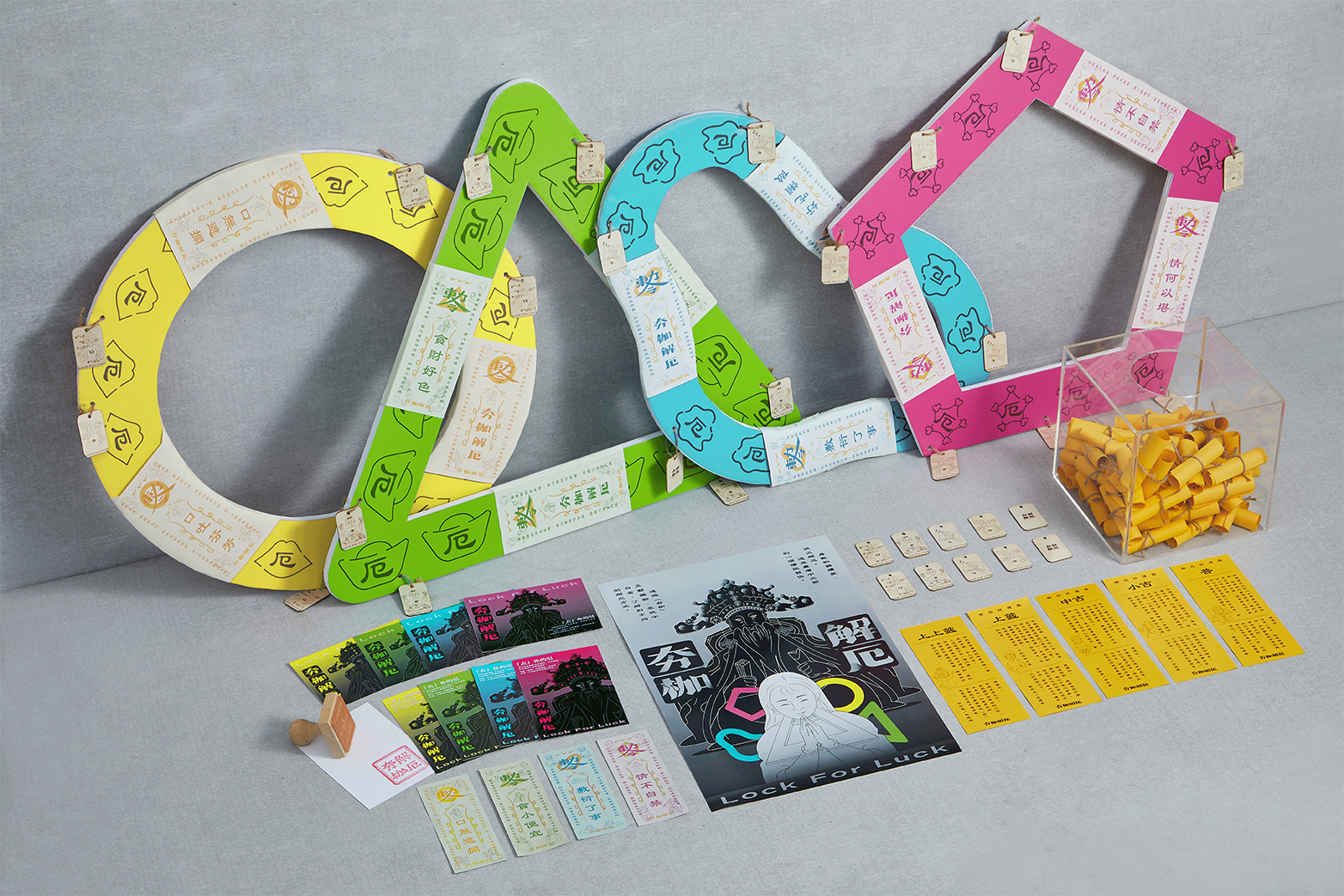
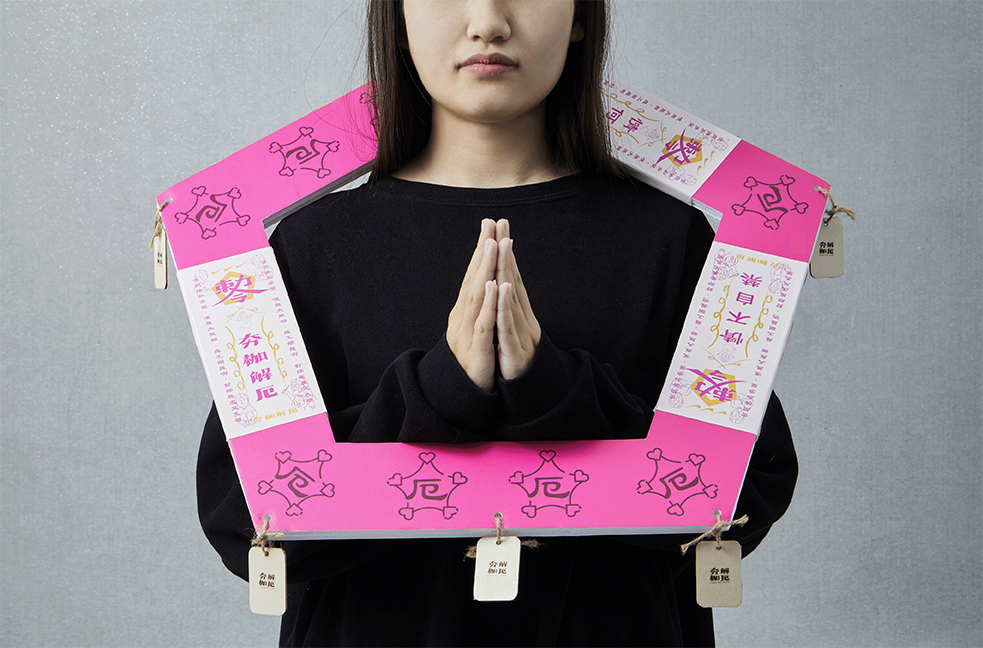
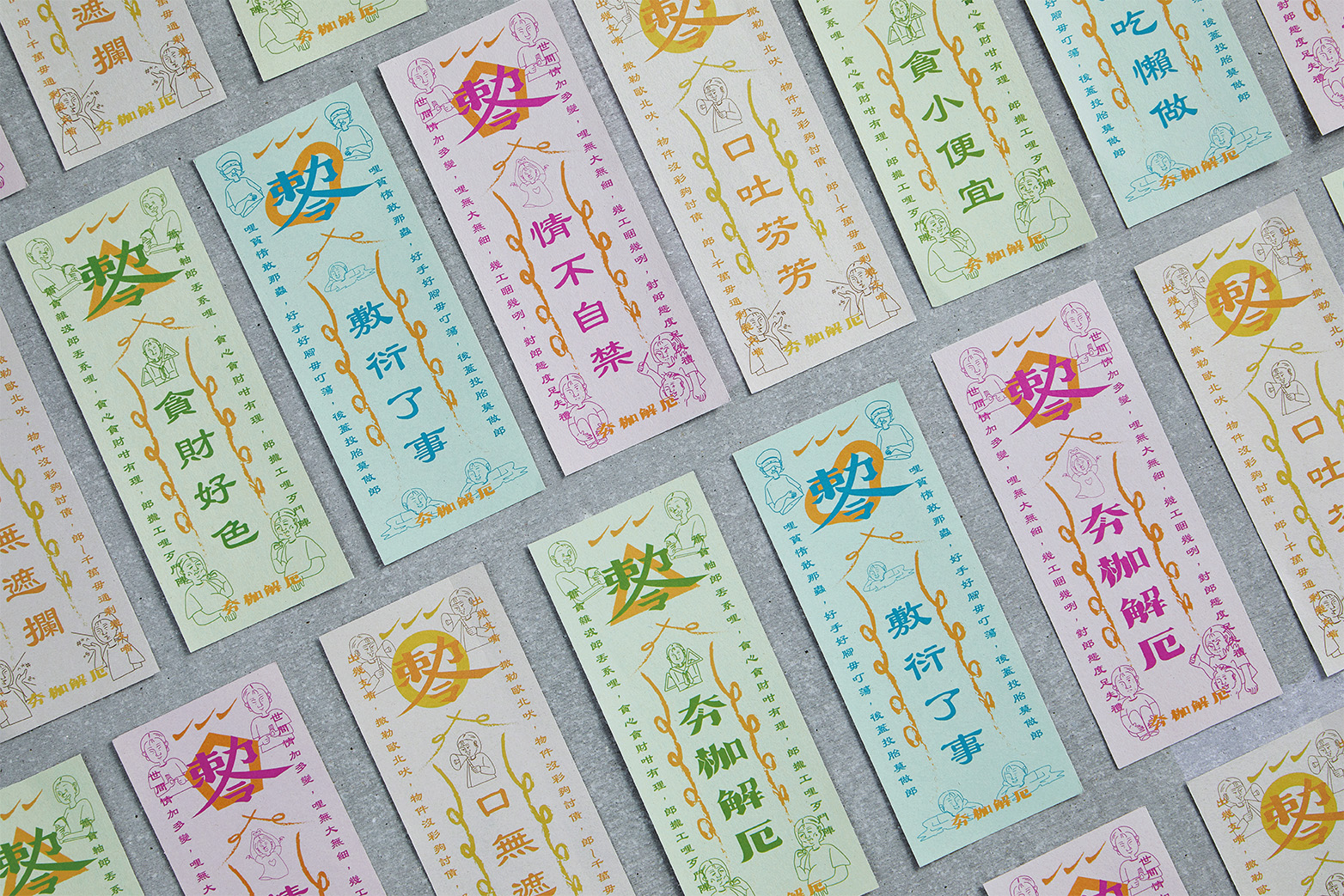
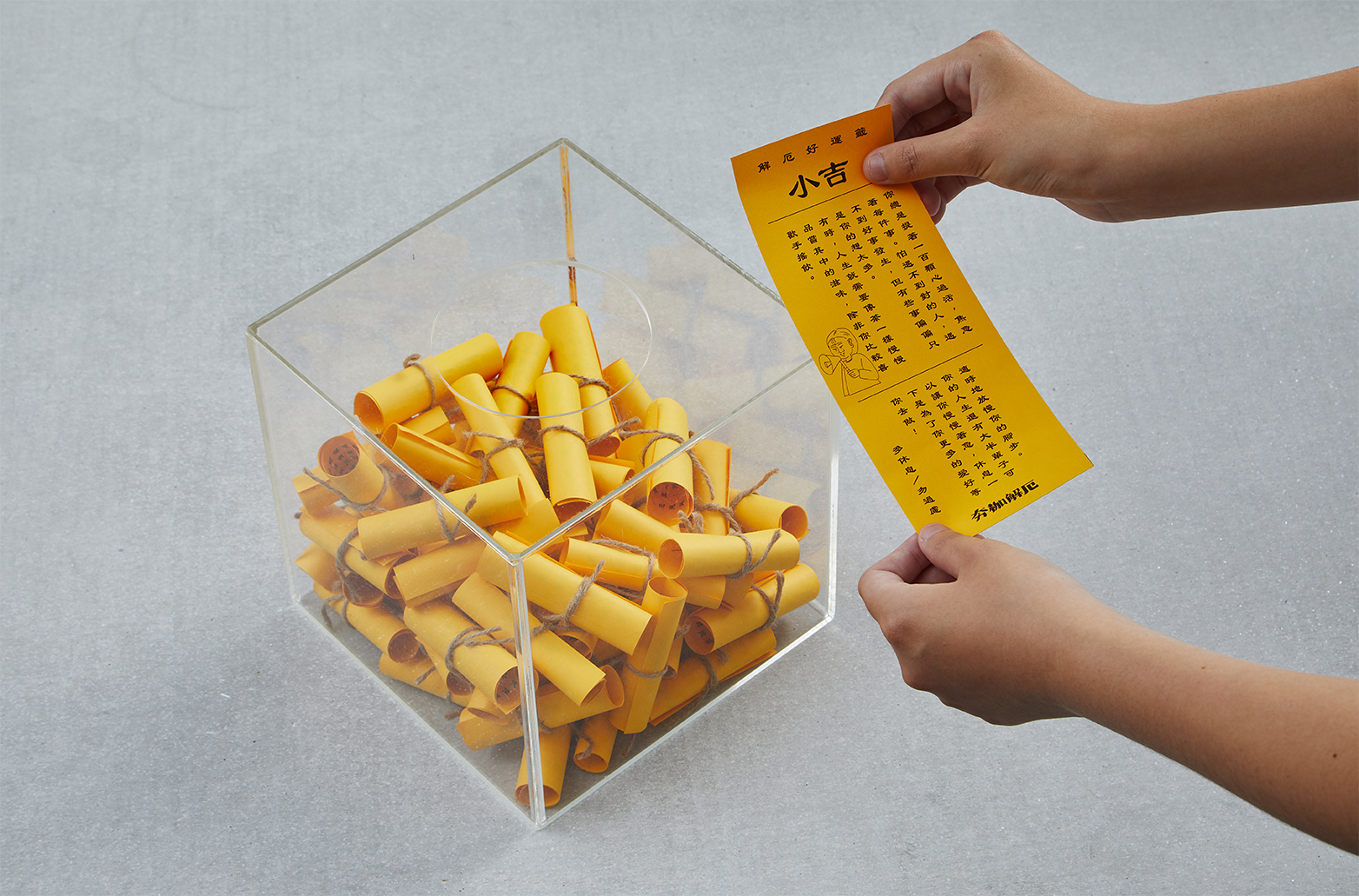
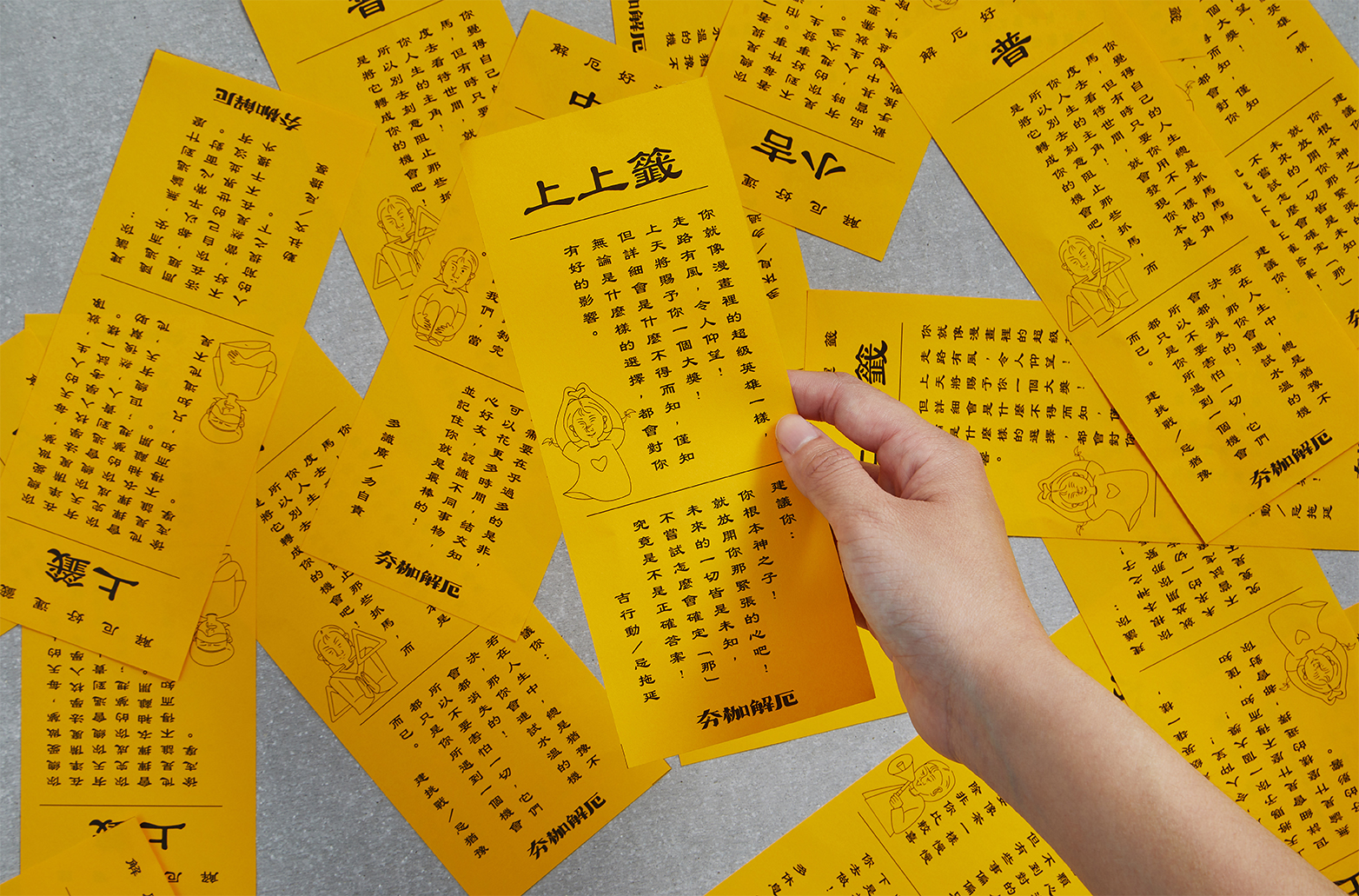
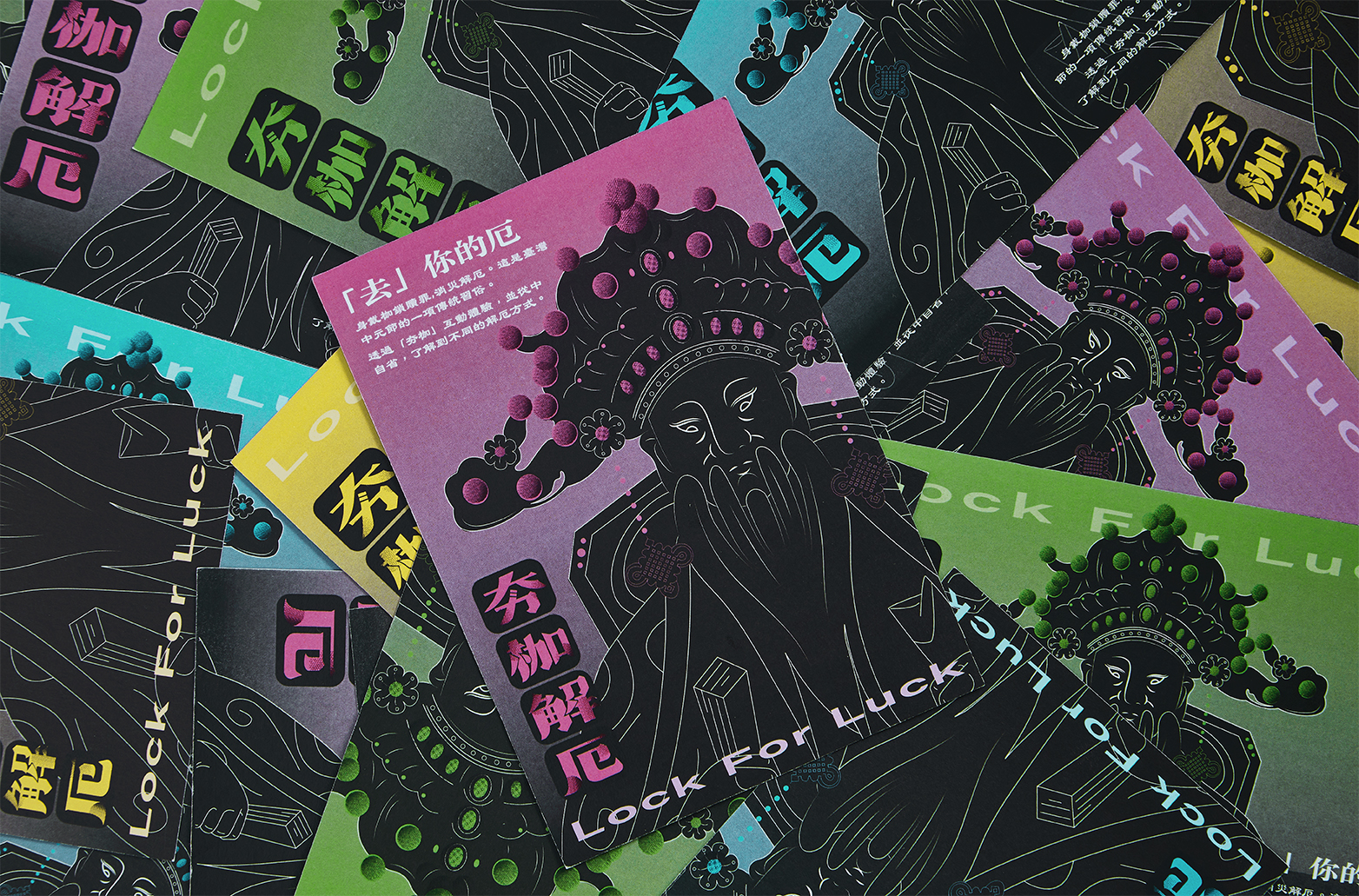
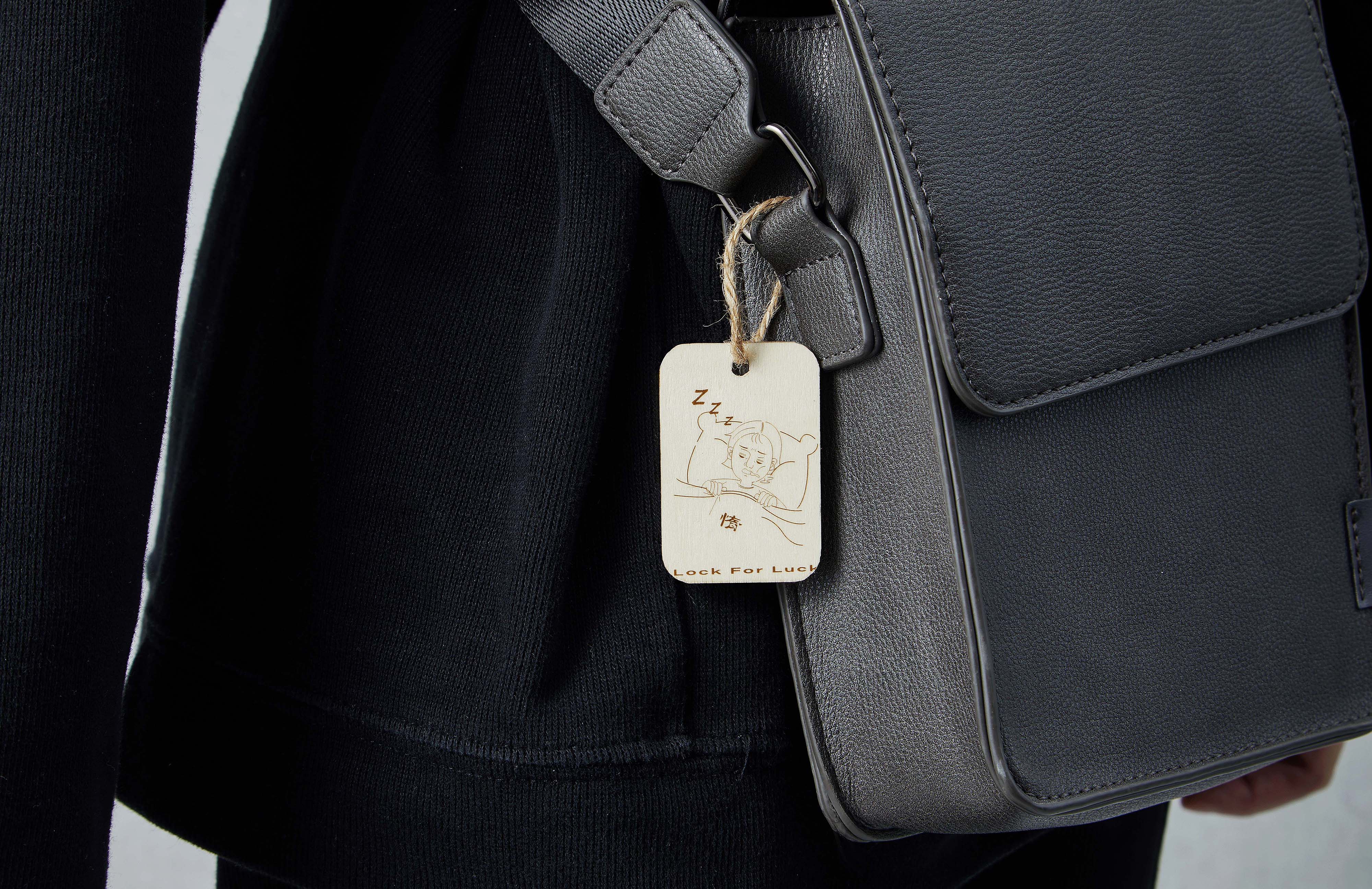
「夯枷解厄」,顧名思義就是舉著枷鎖解掉厄運,是臺灣的傳統中元節習俗。
我們取材至臺灣新竹都城隍廟,保留廟方既有的思想核心,並以「解厄為主軸,反省為次要」將傳統的解厄流程進行簡化及轉化。
且因「枷」在古時是囚禁犯人的一種刑具;在古代若人做錯事想要懺悔,或曾發願卻沒有做到,就會遊街示眾的方式到城隍廟以「夯枷」向城隍爺贖罪。
因此,我們主要保留了原有的「夯枷」,並同時把「枷」以大眾在日常生活會犯下的過錯進行分類設計,再將活動承接到我們所規劃的「展內遊街」、「反省留言」及「抽籤祈福」,讓參與者能在短時間內快速體驗不同於傳統的夯枷流程。
整體規劃以「文化快閃展覽」的方式呈現,將這項鮮為人知的傳統文化轉化為現代思維,並添加會吸引年輕人的視覺元素,讓參與展覽體驗的人員能在短時間內對這項傳統習俗留下不同的印象,而非在展場經過的蜻蜓點水,並讓他們擁有不同的收穫、了解到不同的解厄解困方式。
因此,也希望能讓參與者除了體驗解厄流程,也能以不同的方式來進行自我溝通,有一個身心靈的體驗,讓大眾們可以一同參與,觸及參與者的內心、沈思自我、與人互動。
將在生活遇到的不順利,藉由我們所設計了的體驗流程當作一個出口來「解掉厄運」。
「夯枷解厄」,顧名思義就是舉著枷鎖解掉厄運,是臺灣的傳統中元節習俗。
我們取材至臺灣新竹都城隍廟,保留廟方既有的思想核心,並以「解厄為主軸,反省為次要」將傳統的解厄流程進行簡化及轉化。
且因「枷」在古時是囚禁犯人的一種刑具;在古代若人做錯事想要懺悔,或曾發願卻沒有做到,就會遊街示眾的方式到城隍廟以「夯枷」向城隍爺贖罪。
因此,我們主要保留了原有的「夯枷」,並同時把「枷」以大眾在日常生活會犯下的過錯進行分類設計,再將活動承接到我們所規劃的「展內遊街」、「反省留言」及「抽籤祈福」,讓參與者能在短時間內快速體驗不同於傳統的夯枷流程。
整體規劃以「文化快閃展覽」的方式呈現,將這項鮮為人知的傳統文化轉化為現代思維,並添加會吸引年輕人的視覺元素,讓參與展覽體驗的人員能在短時間內對這項傳統習俗留下不同的印象,而非在展場經過的蜻蜓點水,並讓他們擁有不同的收穫、了解到不同的解厄解困方式。
因此,也希望能讓參與者除了體驗解厄流程,也能以不同的方式來進行自我溝通,有一個身心靈的體驗,讓大眾們可以一同參與,觸及參與者的內心、沈思自我、與人互動。
將在生活遇到的不順利,藉由我們所設計了的體驗流程當作一個出口來「解掉厄運」。
Lock for Luck
"Hàng jiā jiě è" literally means lifting shackles to dispel misfortune, which is a traditional custom observed during the Ghost Month in Taiwan.
We drew inspiration from the Cheng Huang Temple in Hsinchu, Taiwan, while preserving the core philosophy of the temple.
We emphasize "dispelling misfortune as the main theme," with introspection as secondary, simplifying and transforming the traditional process of dispelling misfortune.
In ancient times, "shackles" were used as a tool to imprison wrongdoers. If someone wanted to repent for their wrongdoings or fulfill unkept vows, they would publicly parade through the streets to the Cheng Huang Temple to redeem themselves by "hanging the shackles" as an act of atonement. Therefore, we primarily retain the original concept of "hanging the shackles" and categorize the "shackles" to represent faults commonly committed by people in daily life. We then integrate these into activities such as "street procession within the exhibition," "introspective messages," and "fortune drawing," allowing participants to quickly experience a different process of hanging the shackles compared to tradition.
The overall plan is presented in the form of a "cultural flash exhibition," transforming this lesser-known traditional culture into modern thinking and incorporating visual elements that attract young people. This enables participants of the exhibition to leave with different impressions of this traditional custom in a short time frame, rather than merely passing through the exhibition. It also allows them to have different gains and understand different ways of dispelling misfortune and solving difficulties.
Therefore, we also hope to enable participants to not only experience the process of dispelling misfortune but also engage in self-communication in different ways, experiencing a holistic mind-body-spirit journey. This allows the public to participate together, touching the hearts of participants, promoting self-reflection, and fostering interpersonal interactions.
The experiential process we've designed serves as an outlet to "remove misfortune" encountered in life when faced with difficulties.
南臺科技大學 視覺傳達設計系
(四年級)
張祐禎
南臺科技大學 視覺傳達設計系
(四年級)
黃琪瑩
南臺科技大學 視覺傳達設計系
(四年級)
楊貽婷
南臺科技大學 視覺傳達設計系
(四年級) 指導老師 陳重任